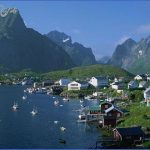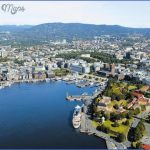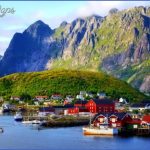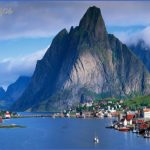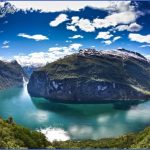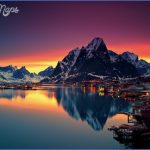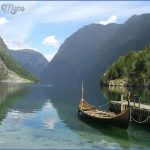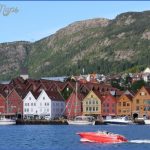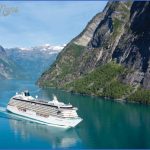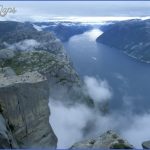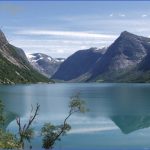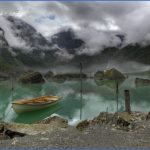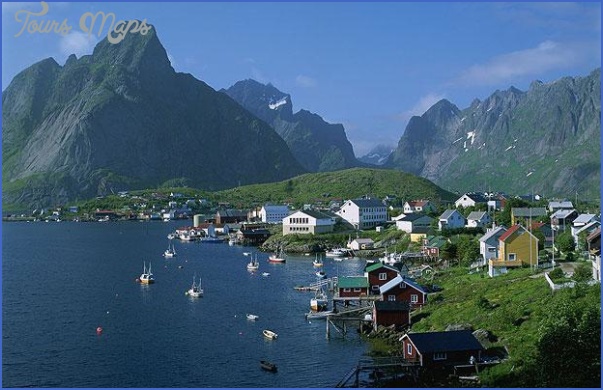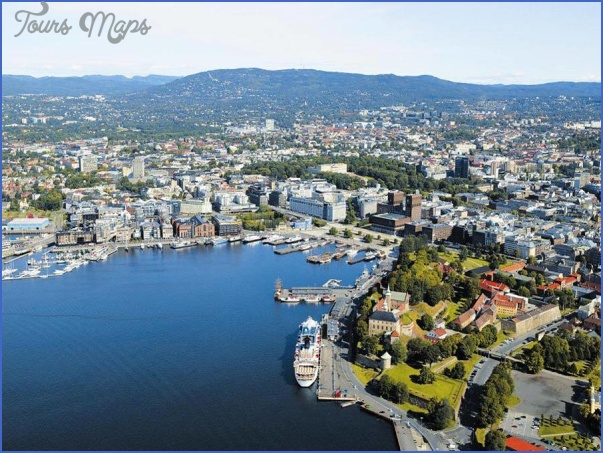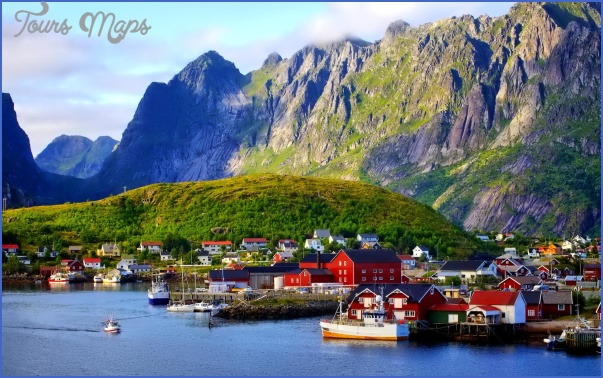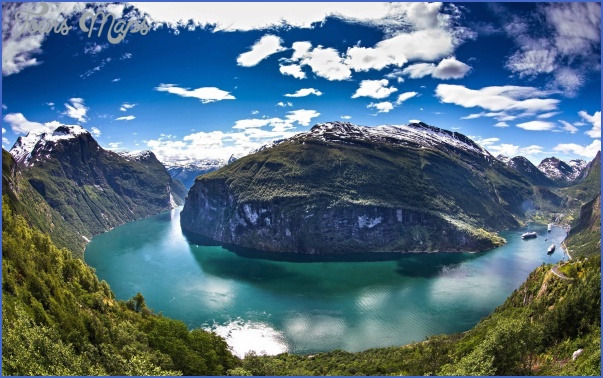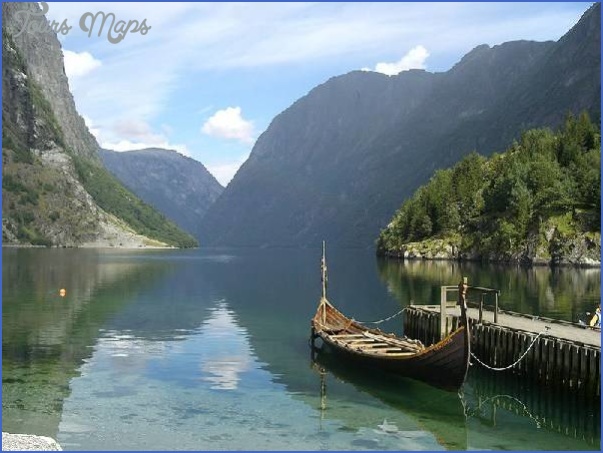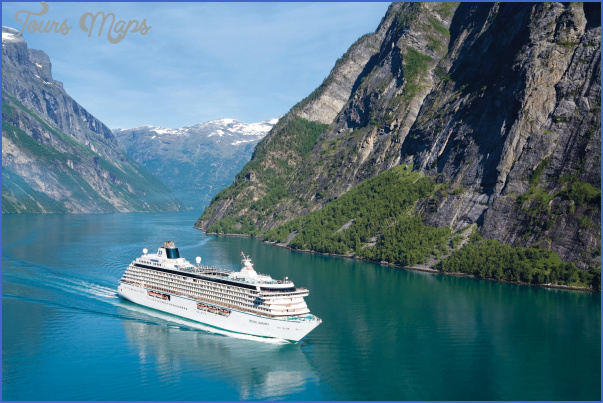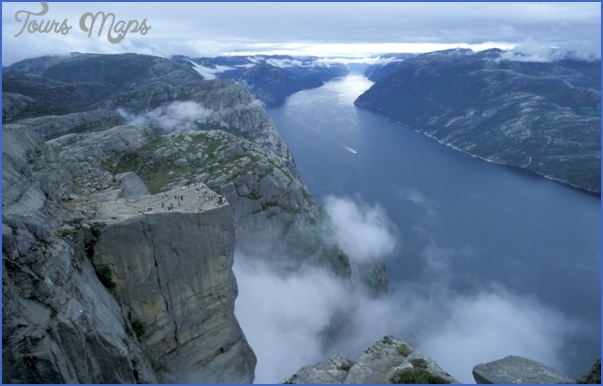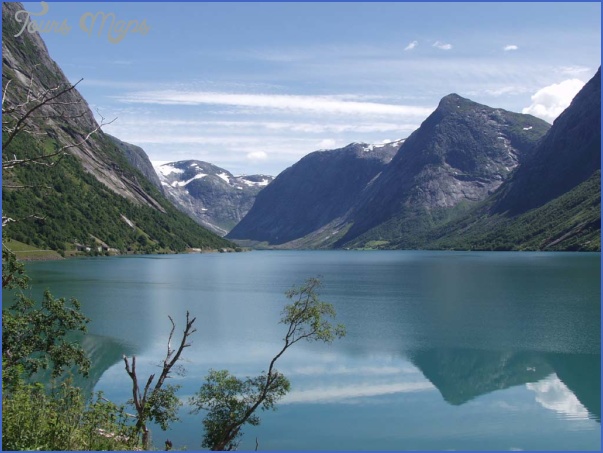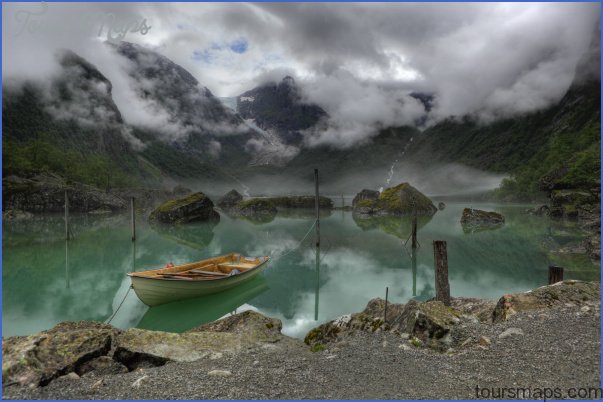Norway, long and narrow eleven hundred miles long, in fact lies alongside Sweden. The mountains and fjords of Norway leave little land to farm and until recently Norway was the poor relation in Scandinavia, relying heavily on fishing and maritime commerce for survival. The discovery of oil off its Atlantic coast changed that and those same mountains and fjords make the country the most scenic of the Scandinavian countries.
The fingers of water reaching into the Atlantic coastline of Norway are must sees for tourists. Cruising through the fjords, the visitor sees tiny patches of land where a few acres make up a farm. Water transportation is the only way of reaching them. Farming in Norway is government subsidized, necessarily so because of the small size of most of the farms and the short growing season.
Roads in Norway are good and so, too, is the train system. The ride between Bergen and Oslo is particularly scenic. And when Norwegians disembark from train, bus, plane, auto they soon leave everyone else behind. They walk as though they are cross-country skiing, poles in hand, straight ahead, moving fast. Their personalities are about the same, straightforward, energetic, relatively uncomplicated. The plumed-hatted soldiers who stride around the royal palace in Oslo may symbolize the national ethic, self-respecting and self-assured, without a trace of the belligerence associated with the military.
The famous stave church at the Norwegian Folk Museum in Oslo, Norway, was built at Gol in the Hallingdal valley around 1250, but was transferred to Oslo in 1885.
Source: Norwegian National Tourist Office.
Scandinavians do themselves proud in building city halls. Those in Copenhagen, Oslo and Stockholm are among the finest buildings in their countries impressive in size and design. Scandinavians are generally art conscious.
Sitting on Oslo’s waterfront are the City Hall and a medieval fort, part of which houses a Resistance Museum. The City Hall is much more than an administrative center; it is a major art museum as well. The royal palace is within walking distance, a plain building as palaces go, enlivened by the handsome palace guard with jaunty step.
Don’t look for aristocratic palaces in Norway. The Norwegians could not afford them psychologically or materially. There is one baronial home on the outskirts of Oslo, leftover from the days of Danish domination. This manor house is a short bus ride from the city and open to the public. In modern times Norway had but one noble family other than the royal family.
Frogner Park, not far from downtown Oslo, has an unforgetable sculpture park, a park in itself worth the trip to Oslo. It came about as a result of a unique contract between sculpturer Vigeland and the city fathers of Oslo in 1921. Vigeland agreed that all he had sculpted and might sculpt in the future would belong to the city. In return the city would provide the setting, the working materials and the help he would need. Both probably got more than they bargained for.
The geiranger fjord in Norway’s Fjord Country, seen from the famous Flydal canyon. Fjords, deep-water inlets from the sea, penetrate Norway’s coasts to provide spectacular scenery.
Vigeland got artisans he needed for stonecutting, plating workshops, even a smithy. Oslo got an eighty-acre sculpture garden the likes of which are not approached elsewhere.
It took the city nearly a year to quarry and move through the streets the single stone which was to become the centerpiece of the park, the Monolith of Life. It stands six stories high and weighs 260 tons. It and Vigeland’s other works tell the cycle of human life, from birth to death, its joys, anguish, love and struggle. Life as portrayed by Vigeland is far from fun and games. All the figures are of stocky, for most part serious, types. There is no lightness of spirit as seen in Milles’ sculpture park in Stockholm. People age, wither, and die and new generations are born. Vigeland’s explicit nudity shocked earlier generations but seems mild enough today.
The park leaves a lasting impression of astonishing vigor, so much accomplished within one lifetime. On the twenty steps around the Monolith alone are thirty-six granite groups. A three-hundred-foot bridge has fifty-eight bronze figure groups.
The famous Vigeland Monolith in Oslo’s Frogner Park is fifty-six feet high and includes 121 sculptured humans. It consists of a single slab of rock, and three men worked for thirteen years from 1929 to 1942 to shape the sculptures.
A short ferry ride from the Oslo city hall is the peninsula of Bygdoy where preserved Viking ships are on display. Even more interesting is the Vestfold Folk Museum, a village of yesteryear that explains something of the Norwegian character. With little arable land and long winters, Norwegians had compact farm homes, planned for survival. Being practical people, there was a special room for grandma in every house.
Bergen, home of Edward Grieg, on the Atlantic side of Norway, is a base for fjord excursions. Going northward into the mountains it is not uncommon to see a herd of reindeer moving across the tundra.
Norwegian restaurants are nothing to write home about partly because the status of chefs is not high. One of the more interesting and less expensive meats served in restaurants is whale flesh. Solid muscle, it looks a little like liver, but tastes something like beef. Reindeer steaks are also good. Breakfast buffets can be enormous, with five or six kinds of cold herring being served.
NORWAY Photo Gallery
Maybe You Like Them Too
- The Best Cities To Visit in The World
- World’s 10 Best Places To Visit
- Coolest Countries in the World to Visit
- Travel to Santorini, Greece
- Map of Barbados – Holiday in Barbados

